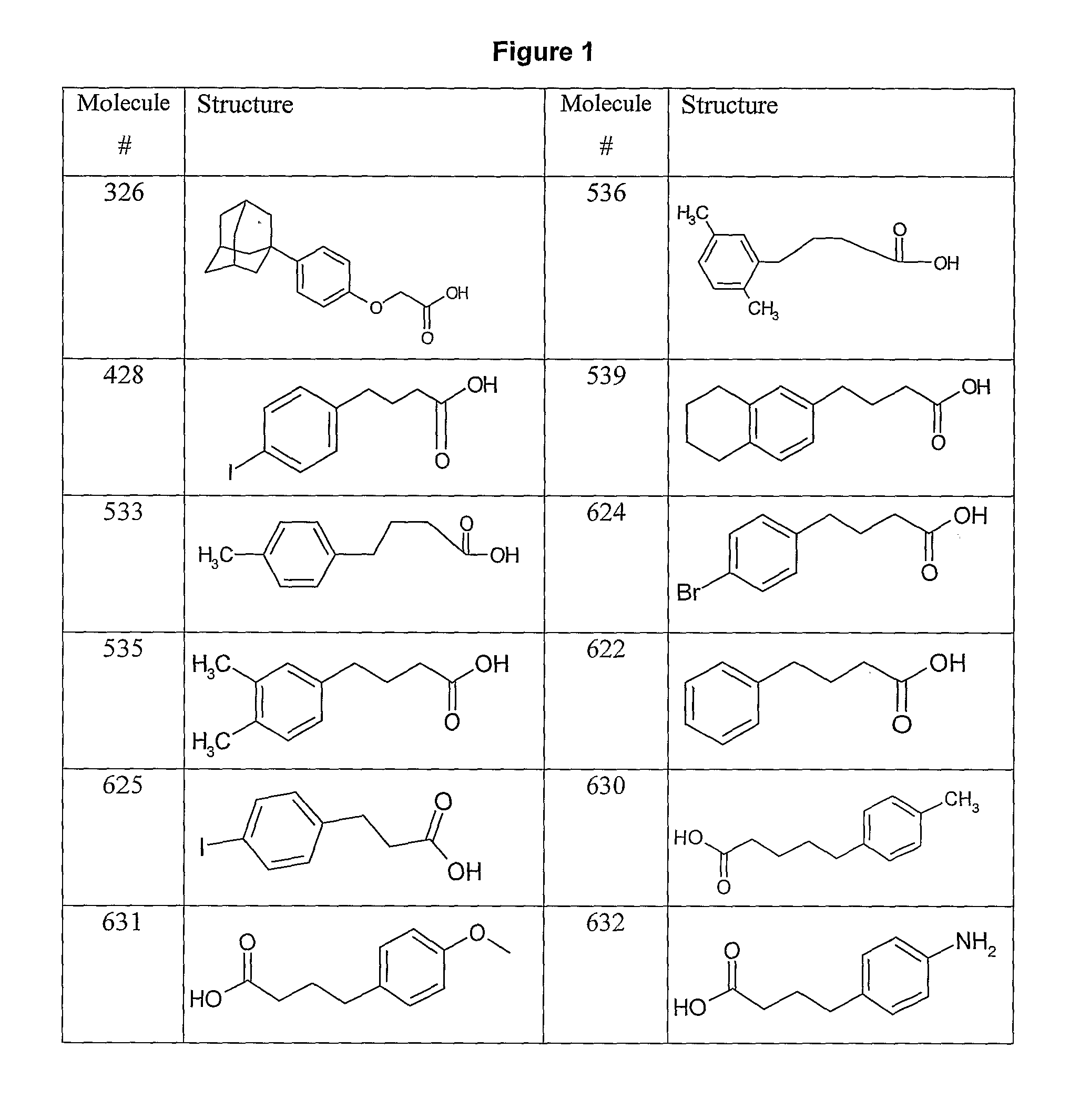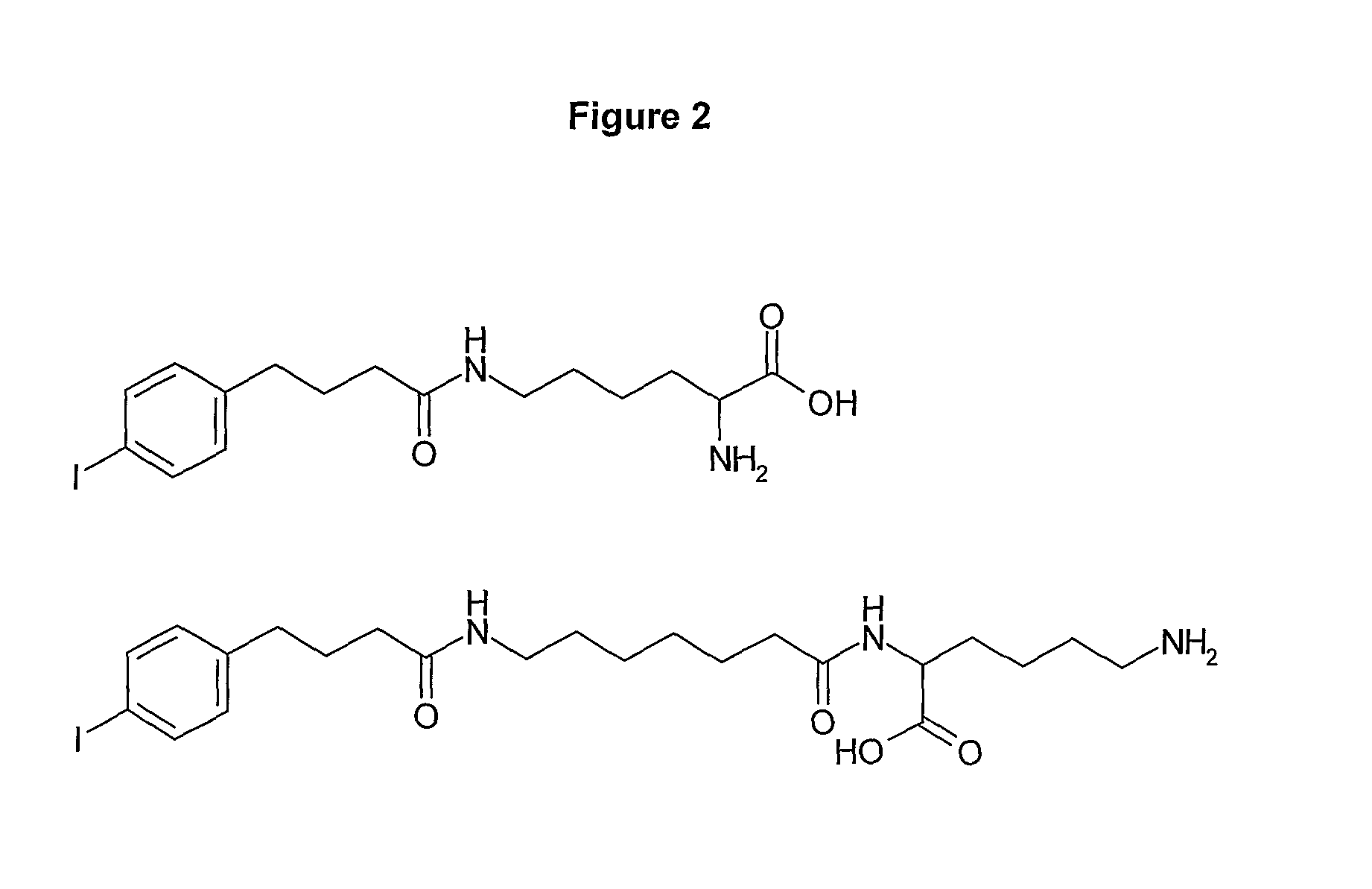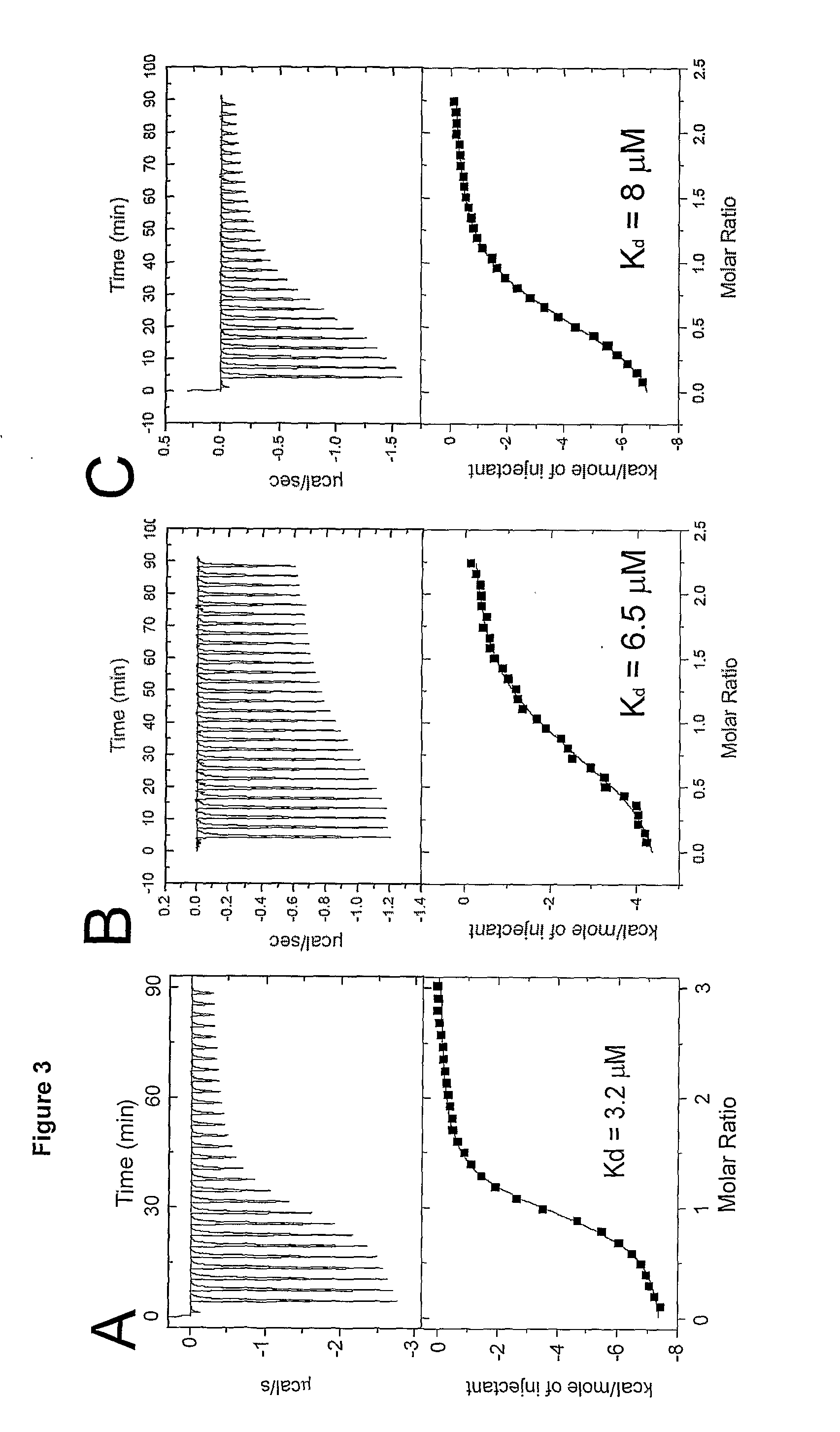Albumin binding molecules and uses thereof
a technology of albumin binders and molecule, which is applied in the field of portable albumin binders, can solve the problems of inability to easily be coupled to other bioactive moities without loss, limited applicability, and large number of known albumin binders, etc., and achieves improved quality, reduced blood clearance profile, and high signal intensity
- Summary
- Abstract
- Description
- Claims
- Application Information
AI Technical Summary
Benefits of technology
Problems solved by technology
Method used
Image
Examples
example 1
Preparation of Compounds of the Invention (“428-Aminoheptanoic Acid-α-Lys-ε-NH2” and “428-ε-Lys-α-NH2”)
[0160]FIG. 1 shows possible building-block reagents, starting from which the compounds of the inventions may be synthesised. The carboxylic acid of compound 428 (obtainable from SIGMA, catalogue number 15634) was activated with one equivalent of EDC and 1.2 equivalents of NHS in DMSO for 4 h at 30° C. prior to addition of ten equivalents of 7-aminoheptanoic acid and triethylamine. The reaction was stirred overnight at 30° C., to yield 428-aminoheptanoic acid. The product was purified by HPLC (see Example 21, General Methods) and analysed by mass-spectrometry.
[0161]Generally, all molecules synthesized in the following examples were characterized by mass spectrometry.
[0162]In one preparation, 428-aminoheptanoic acid: 10 mol of 428 were stirred with 8 μmol of N-(3-dimethylaminopropyl)-N′-ethylcarbodiimide (EDC) and 10 μmol of N-hydroxysuccinimide (NHS) in 50 μl of DMSO for 3 hours at ...
example 2
Preparation of Compounds of the Invention (“533-Aminoheptanoic Acid-α-Lys-ε-NH2” and “533-ε-Lys-α-NH2”)
[0164]The carboxylic acid of compound 533 (obtainable from SALOR, catalogue number S532649) is activated with one equivalent of EDC and 1.2 equivalents of NHS in DMSO for 4 h at 30° C. prior to addition of ten equivalents of 7-aminoheptanoic acid and triethylamine. The reaction is stirred overnight at 30° C., to yield 533-aminoheptanoic acid. The product is purified by HPLC and analysed by mass-spectrometry.
[0165]A primary amino group is introduced by conjugation of Fmoc-D-Lys-OH via the s-amino group to the carboxyl function of 533 or by conjugation of D-Lys(Fmoc)-OH via the α-amino group to the free carboxyl function of 533-aminoheptanoic acid. The synthesis and purification is performed as described above including a deprotection step after conjugation by addition of a large excess of triethylamine for 4 h prior to purification.
example 3
Preparation of Compounds of the Invention (“539-Aminoheptanoic acid-α-Lys-ε-NH2” and “539-6-Lys-α-NH2”)
[0166]The carboxylic acid of compound 539 ((obtainable from SALOR, catalogue number R244996) is activated with one equivalent of EDC and 1.2 equivalents of NHS in DMSO for 4 h at 30° C. prior to addition of ten equivalents of 7-aminoheptanoic acid and triethylamine. The reaction is stirred overnight at 30° C., to yield 539-aminoheptanoic acid. The product is purified by HPLC and analysed by mass-spectrometry.
[0167]A primary amino group is introduced by conjugation of Fmoc-D-Lys-OH via the ε-amino group to the carboxyl function of 539 or by conjugation of D-Lys(Fmoc)-OH via the α-amino group to the free carboxyl function of 539-aminoheptanoic acid. The synthesis and purification is performed as described above including a deprotection step after conjugation by addition of a large excess of triethylamine for 4 h prior to purification.
PUM
| Property | Measurement | Unit |
|---|---|---|
| Time | aaaaa | aaaaa |
| Molar density | aaaaa | aaaaa |
| Time | aaaaa | aaaaa |
Abstract
Description
Claims
Application Information
 Login to View More
Login to View More - R&D
- Intellectual Property
- Life Sciences
- Materials
- Tech Scout
- Unparalleled Data Quality
- Higher Quality Content
- 60% Fewer Hallucinations
Browse by: Latest US Patents, China's latest patents, Technical Efficacy Thesaurus, Application Domain, Technology Topic, Popular Technical Reports.
© 2025 PatSnap. All rights reserved.Legal|Privacy policy|Modern Slavery Act Transparency Statement|Sitemap|About US| Contact US: help@patsnap.com



